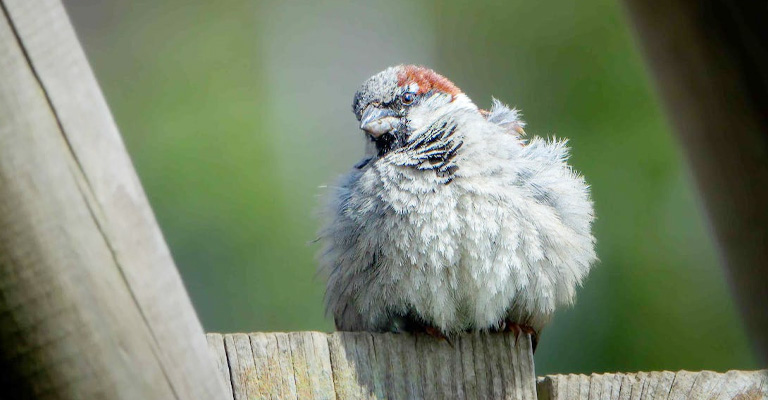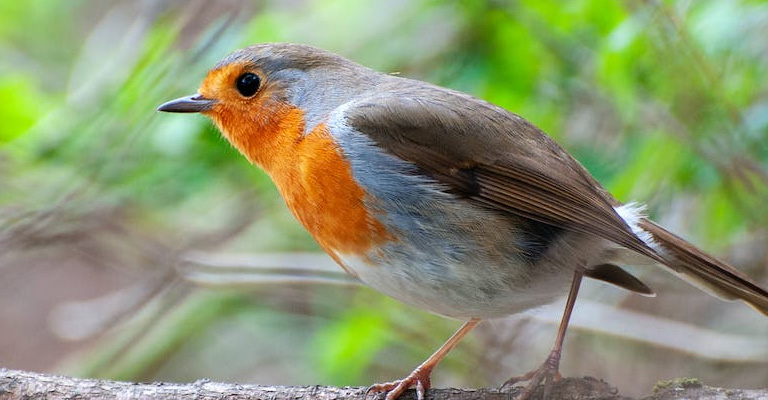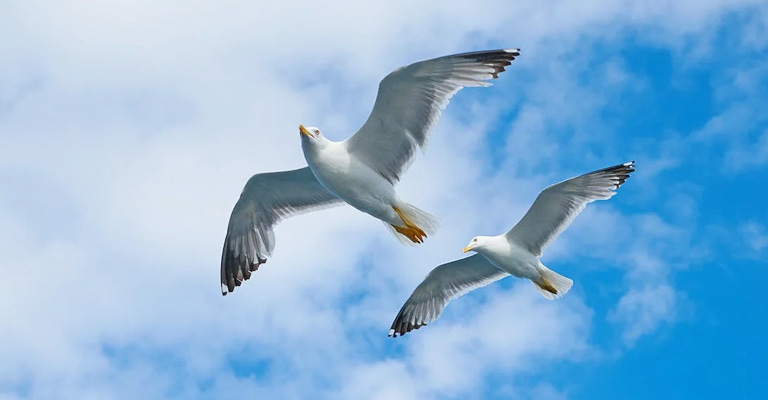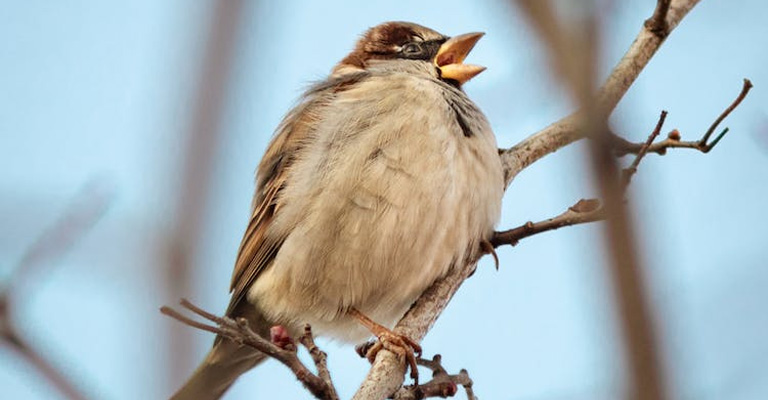Feathers are one of the most distinctive and fascinating features of birds, serving a multitude of essential functions. From flight and insulation to communication and courtship displays, feathers play a crucial role in the lives of these remarkable creatures.
In this article, we will explore the question, “Why do birds have feathers?” We will delve into the evolutionary origins of feathers, their structural and functional adaptations, and the diverse ways in which birds utilize these remarkable appendages.
Join us on a journey to uncover the secrets behind the extraordinary adaptation that sets birds apart from all other creatures: their feathers.

Why Do Birds Have Feathers?
Feathers are a remarkable adaptation that has allowed birds to conquer diverse habitats and fulfill their unique ecological roles. Birds have feathers for several important reasons:
Flight
Feathers are essential for flight. They provide the necessary lift and control that enable birds to soar through the air. The shape and arrangement of feathers create an aerodynamic surface, allowing birds to generate lift and maneuver in the air.
Insulation
Feathers help birds regulate their body temperature. They provide insulation by trapping air close to the bird’s body, creating a layer of warm air that helps retain heat. Feathers also act as a barrier against cold temperatures, wind, and rain.
Camouflage
Feathers can help birds blend into their surroundings, providing camouflage and protection from predators. Many birds have evolved feather colors and patterns that match their habitats, allowing them to hide from potential threats or prey.
Display and Communication
Feathers play a crucial role in courtship displays and communication among birds. Vibrant and elaborate feathers are often used by males to attract mates and establish dominance.
Different feather displays, such as fluffing, raising, or spreading, can convey various messages to other birds.
Protection
Feathers provide physical protection to birds. They act as a shield, covering the bird’s body and protecting it from external elements, such as sharp objects, UV radiation, and extreme weather conditions.
Buoyancy
Some birds, such as waterfowl, have specialized feathers that help them float on water. These feathers are denser and more waterproof, allowing birds to stay buoyant while swimming or floating.
Mating Displays

Feathers play a crucial role in elaborate mating displays. Male birds often use their feathers to create visually stunning displays, such as fan-shaped tail feathers or ornate plumage, to attract females during courtship rituals.
Protection from UV Radiation
Feathers provide a natural barrier against harmful ultraviolet (UV) radiation from the sun. The pigments in feathers can absorb or reflect UV rays, helping to shield birds from potential damage to their skin and underlying tissues.
Streamlining
Feathers help birds maintain a streamlined shape, reducing drag during flight. This streamlined design allows birds to move more efficiently through the air, conserving energy and enabling them to travel long distances.
Sound Production
Certain bird species have specialized feathers that produce unique sounds. For example, male hummingbirds use their tail feathers to create high-pitched sounds during their courtship dives. These sounds are used to attract females and establish territory.
Nest Building
Feathers are often used by birds in the construction of their nests. They provide insulation and cushioning for eggs and nestlings, helping to regulate temperature and protect the fragile young birds.
Display of Health and Vitality
The condition and quality of a bird’s feathers can indicate its overall health and vitality. Birds with healthy feathers are often seen as more attractive to potential mates and may have a higher chance of reproductive success.
Feeding Adaptation
Some bird species have specialized feathers that aid in their feeding habits. For example, certain birds of prey have feathers on their legs called “pantaloons” that help protect them from the sharp talons of their prey.
These are just a few reasons why birds have feathers. The evolution of feathers has allowed birds to adapt to various ecological niches and thrive in diverse environments.
How Do Feathers Help Birds Fly?

Feathers play a crucial role in enabling birds to fly. They provide the necessary lift, control, and maneuverability for birds to fly.
The combination of their shape, structure, flexibility, and attachment to the wings allows birds to achieve powered flight and navigate through the air with precision. Here’s how feathers help birds achieve flight:
Lift
The shape and arrangement of feathers create an aerodynamic surface that generates lift. The asymmetrical shape of flight feathers, with a curved leading edge and a flat or concave trailing edge,
It helps to create a pressure difference between the upper and lower surfaces of the wing. This pressure difference generates lift, allowing birds to stay airborne.
Flight Control
Feathers provide birds with precise control over their flight. Birds can adjust the position and angle of their feathers to change the shape of their wings, altering the airflow and maneuvering in the air. By adjusting the feathers, birds can change their speed, direction, and altitude.
Wing Structure
Feathers are attached to a bird’s wings, which are specialized limbs adapted for flight. The strong and lightweight structure of the wings, combined with the flexibility of feathers, allows birds to generate the necessary thrust and lift to stay aloft.
Wing Flapping
Feathers are connected to the muscles that power wing flapping. The coordinated movement of these muscles allows birds to flap their wings in a specific pattern, creating the necessary lift and propulsion for flight.
Feathers provide the necessary surface area to catch and push against the air during wing flapping.
Feather Flexibility
Feathers are flexible and can change shape during flight. This flexibility allows birds to adjust the curvature of their wings, optimizing lift and reducing drag. Birds can also adjust the angle of their feathers to control airflow and maintain stability during flight.
Feather Strength
Feathers are strong and resilient, with a lightweight structure. This strength allows them to withstand the forces exerted during flight, such as air resistance and the impact of air currents.
Feathers are designed to be both lightweight for efficient flight and durable to withstand the demands of aerial locomotion.
Types of Bird Feathers

There are several types of feathers that make up a bird’s plumage. Each type serves a specific function. Here are some of the main types of feathers found in birds:
Contour Feathers
These are the most visible feathers on a bird’s body. They give the bird its shape and provide insulation, protection, and aerodynamic properties for flight.
Contour feathers have a central shaft called the rachis, with barbs branching off on either side. The barbs have smaller branches called barbules, which interlock with each other to form a smooth and cohesive surface.
Flight Feathers
Flight feathers are specialized contour feathers found on the wings and tail of birds. They are responsible for generating lift and propulsion during flight.
The primary flight feathers are located at the outer part of the wing and provide most of the lift, while the secondary flight feathers are found closer to the body and assist in maneuverability.
Down Feathers
Down feathers are soft and fluffy feathers found underneath the contour feathers. They provide excellent insulation, helping to keep birds warm by trapping air close to their bodies. Down feathers lack the interlocking barbules found in contour feathers, giving them a fluffy appearance.
Semiplume Feathers
Semiplume feathers have a combination of characteristics from both contour feathers and down feathers. They have well-defined rachis with loose barbs that lack interlocking barbules. Semiplume feathers are found beneath the contour feathers and provide insulation and buoyancy.
Filoplume Feathers
Filoplume feathers are small, hair-like feathers with a few barbs at the tip. They are often found near the base of contour feathers and play a role in sensory perception.
Filoplumes are thought to provide feedback on the position and movement of the contour feathers, helping birds maintain their feather alignment.
Bristle Feathers
Bristle feathers are stiff and specialized feathers found around a bird’s face, particularly near the eyes, beak, and mouth. They serve a protective function, helping to shield the bird’s eyes and face from debris while foraging or flying.
These are just a few examples of the different types of feathers found in birds. Each type of feather has its own unique structure and function, contributing to the overall health, flight, and survival of the bird.
FAQs
Birds keep their feathers clean through preening. Preening involves using their beaks to comb through their feathers, removing dirt, parasites, and realigning the barbs and barbules.
Yes, all birds molt their feathers. Molting is the process of shedding and replacing old feathers. It allows birds to maintain the health and functionality of their plumage. Molting can occur once or twice a year, depending on the species.
Some birds have specialized feathers that can appear to change color depending on the angle of light hitting them. This phenomenon, known as iridescence, is caused by the microscopic structure of the feathers reflecting light in different ways, creating the illusion of changing colors.
Birds waterproof their feathers through the application of oil from their uropygial gland during preening. The oil contains waxes and fatty acids that help to repel water, preventing it from saturating the feathers.
This waterproofing ability allows birds to stay dry and maintain their insulation.
The lifespan of bird feathers varies depending on the species and the feather type. Contour feathers, which are exposed to more wear and tear, generally have a shorter lifespan of a few months to a year.
Flight feathers, which endure more stress during flight, may last for a year or more.
Bottom Line
Feathers are an extraordinary adaptation that has allowed birds to conquer the skies and thrive in diverse environments around the world.
These specialized structures provide birds with the ability to fly, regulate body temperature, display vibrant colors, and even produce sounds. Feathers have evolved over millions of years, adapting to the specific needs and lifestyles of different bird species.
From the intricate barbs and barbules that create a strong yet flexible structure to the array of pigments and structural adaptations that produce stunning colors and patterns, feathers are a testament to the incredible diversity and ingenuity of nature.
So, the next time you marvel at the grace of a soaring bird or admire the intricate patterns on a feather, remember the remarkable story behind why birds have feathers.